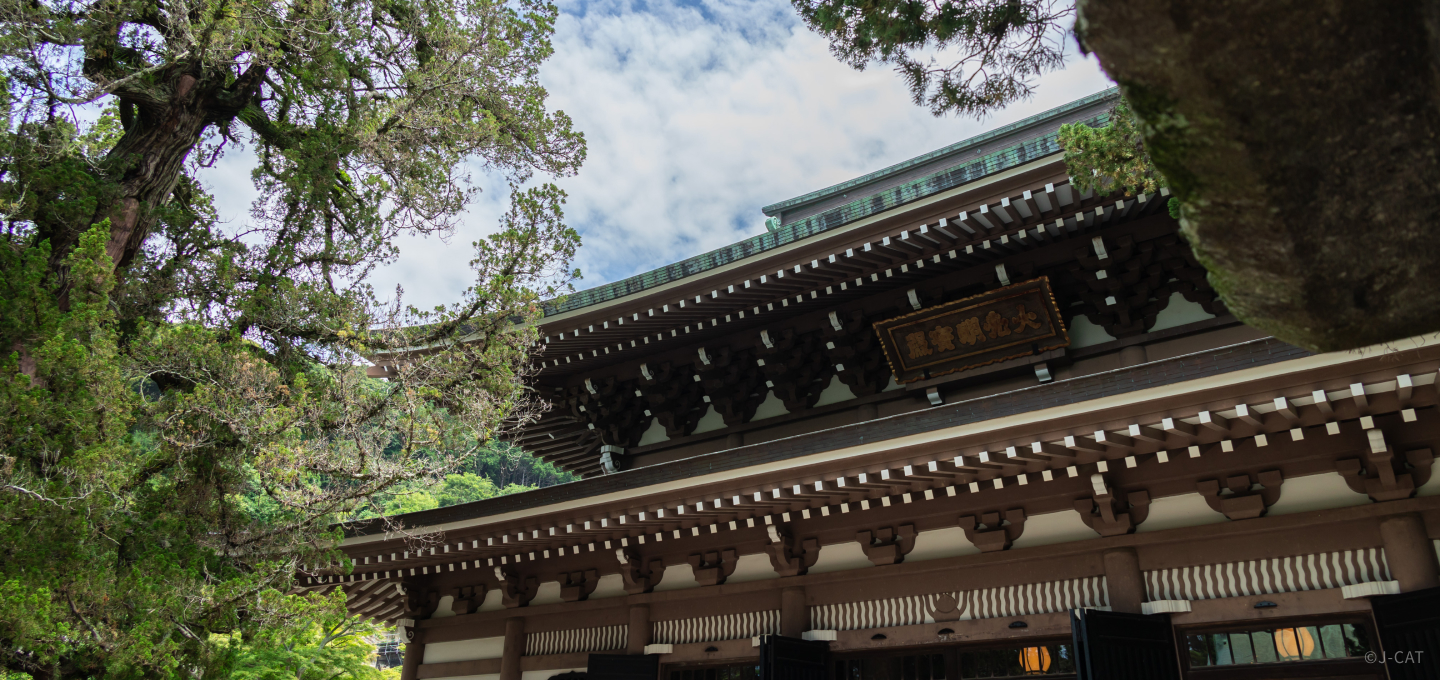
Special Experience
Kamakura
Explore the Spirit of Prayer with a Kannon Painter in Kamakura, Kanagawa—Temple Tour and Painting Experience

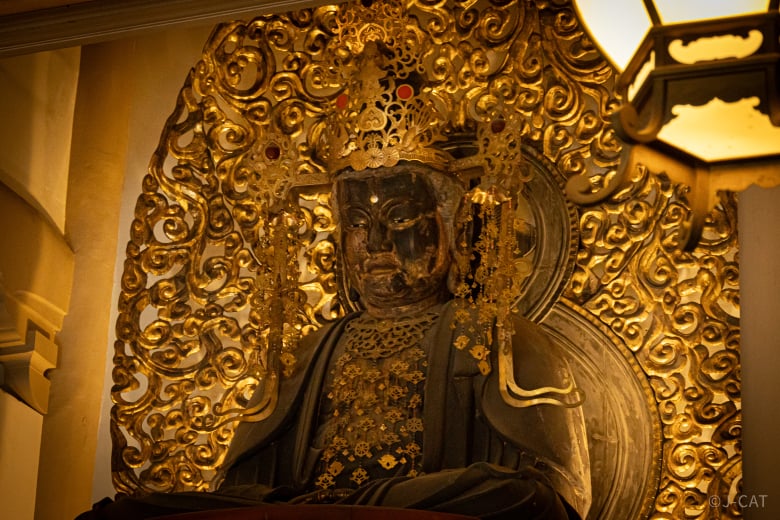
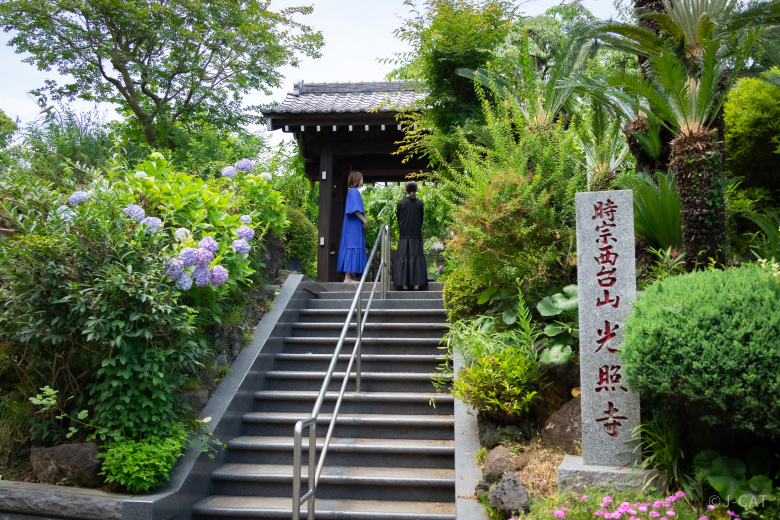
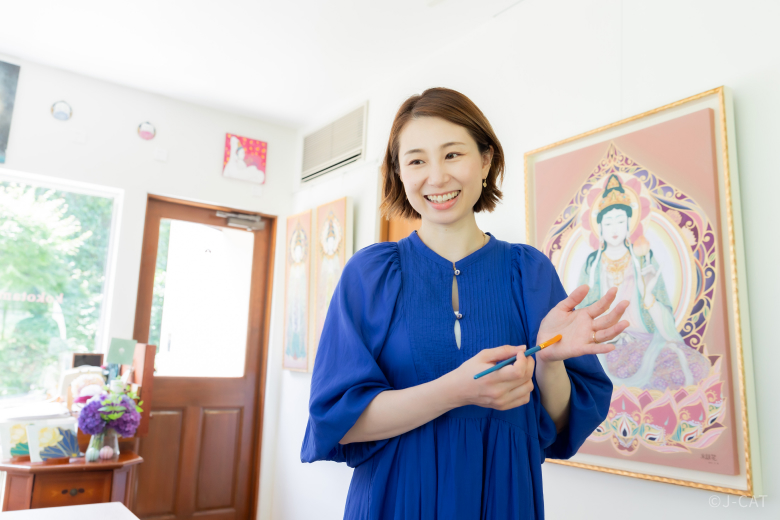
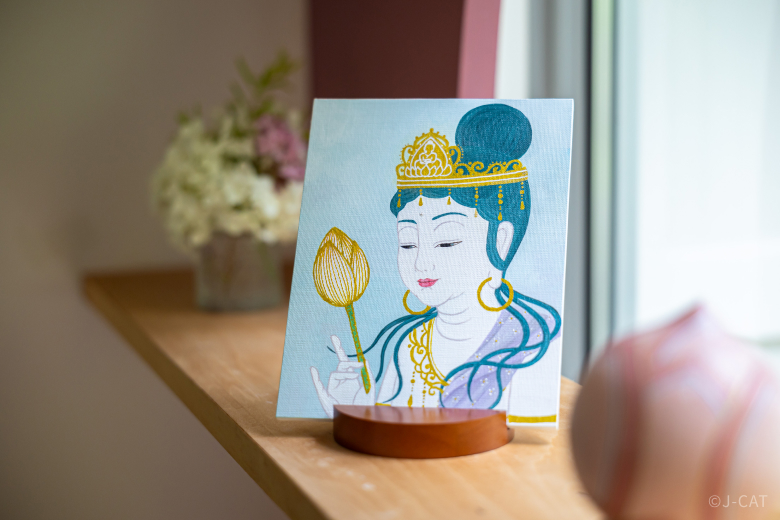
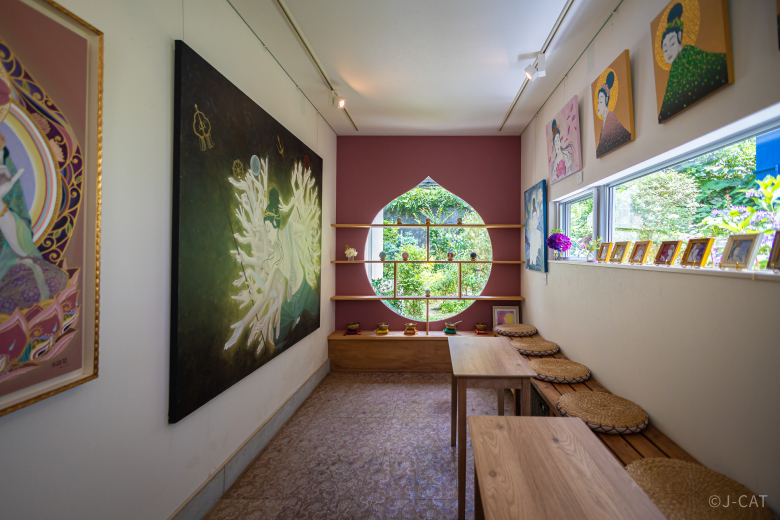
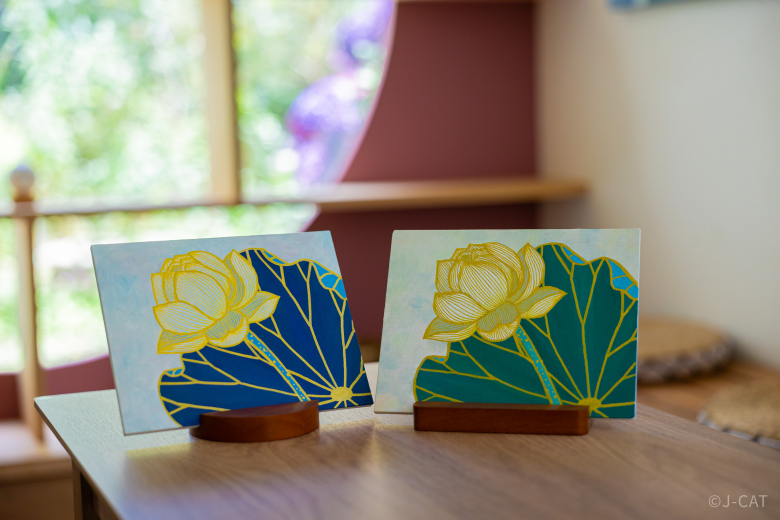
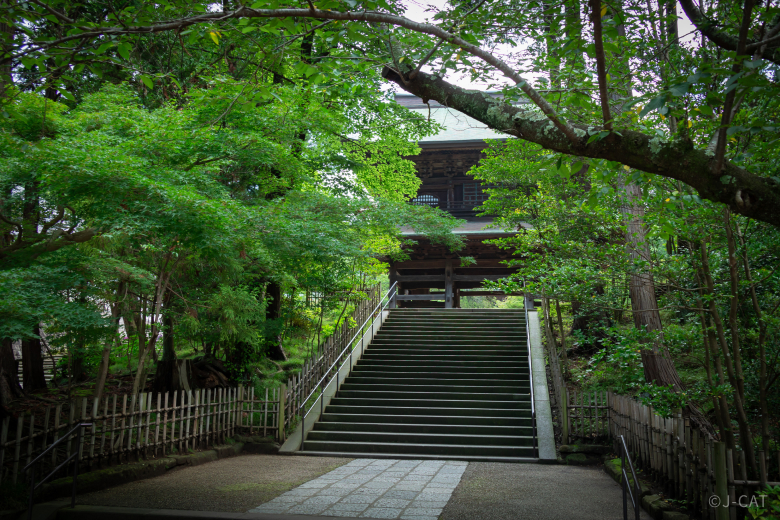
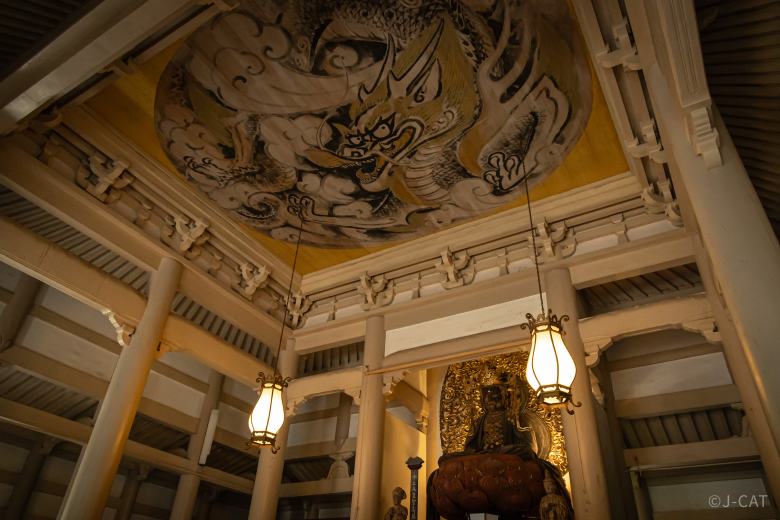
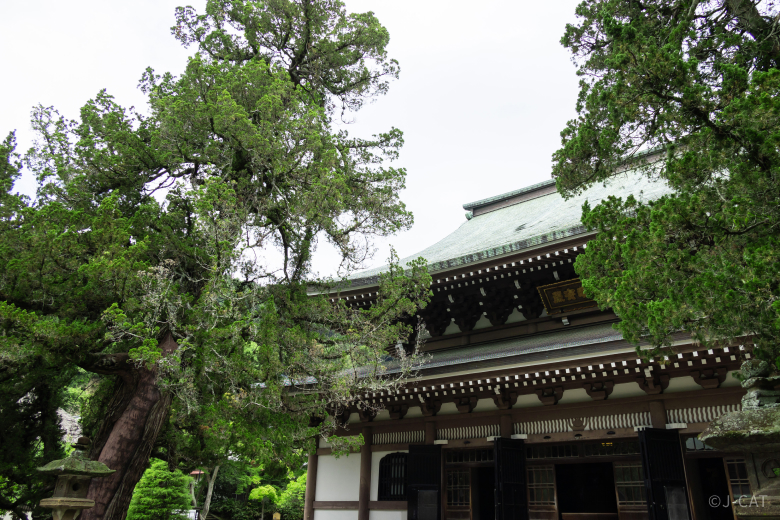
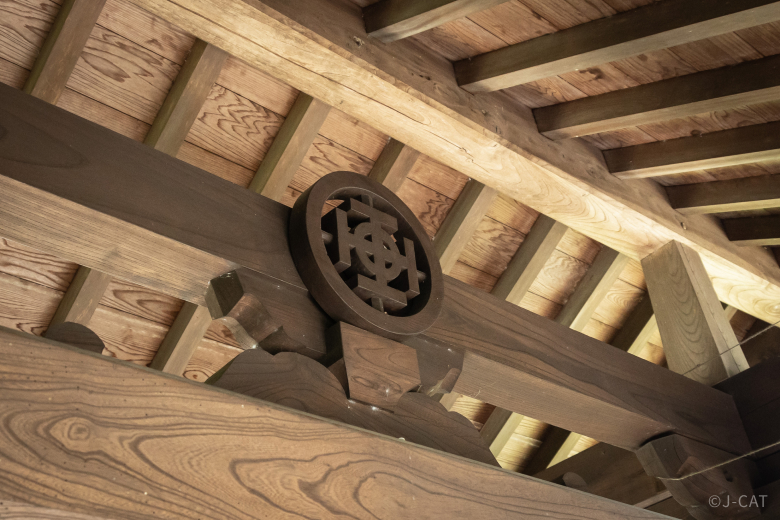
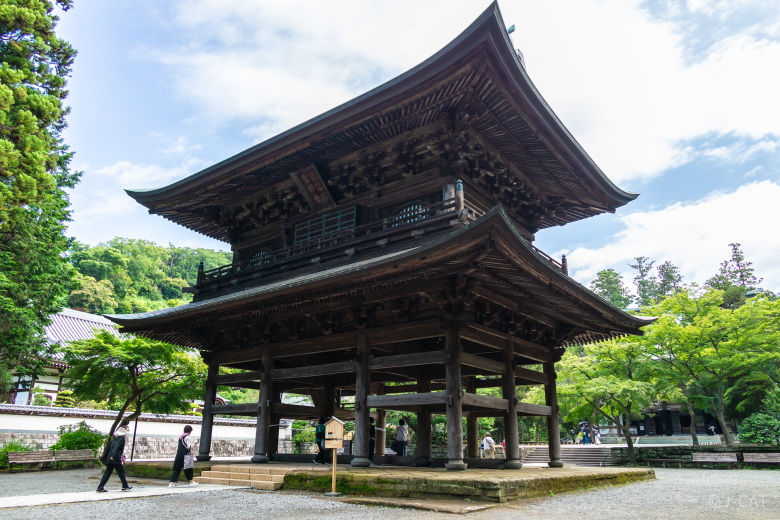
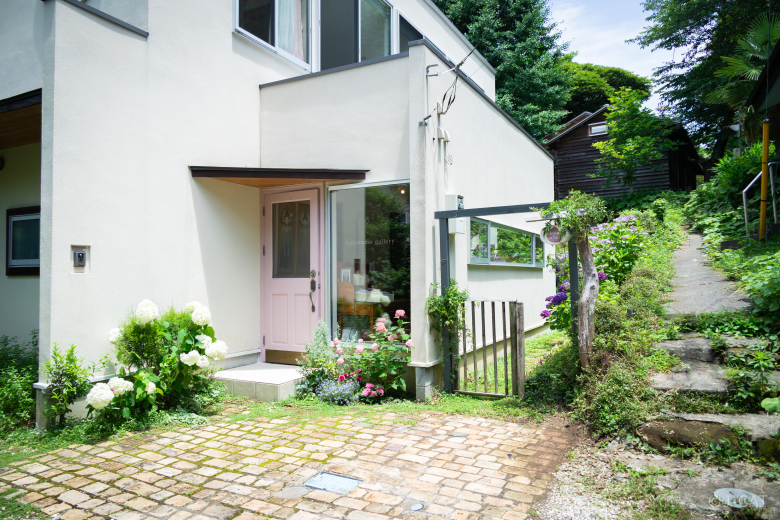
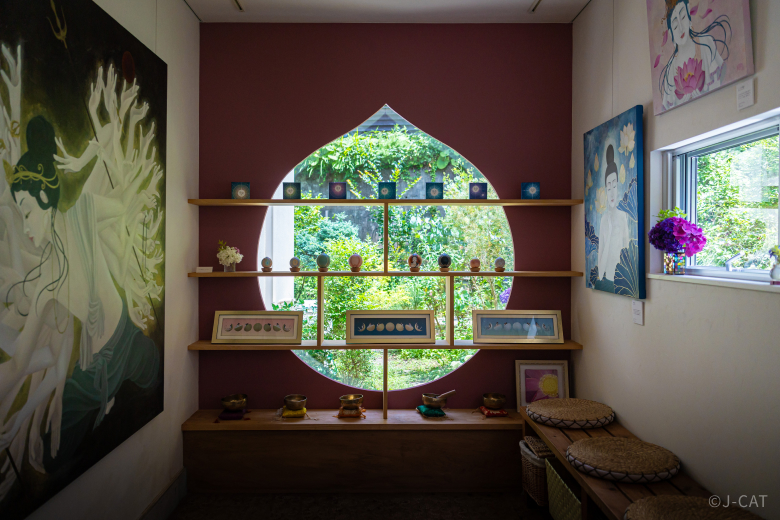
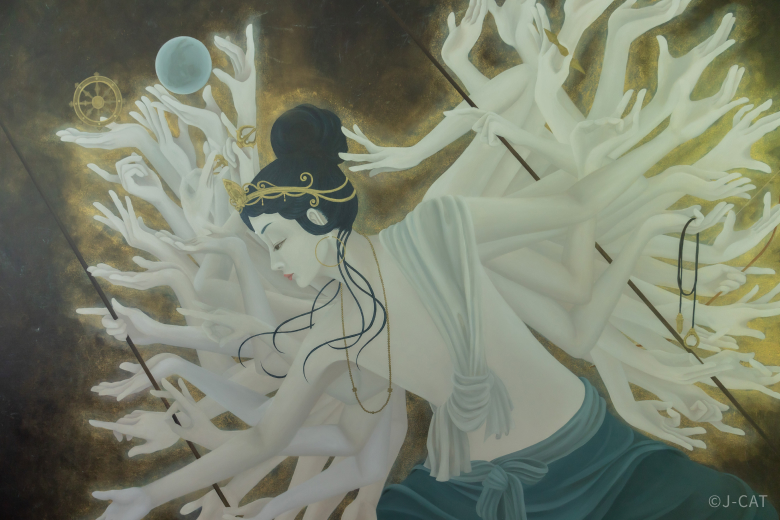
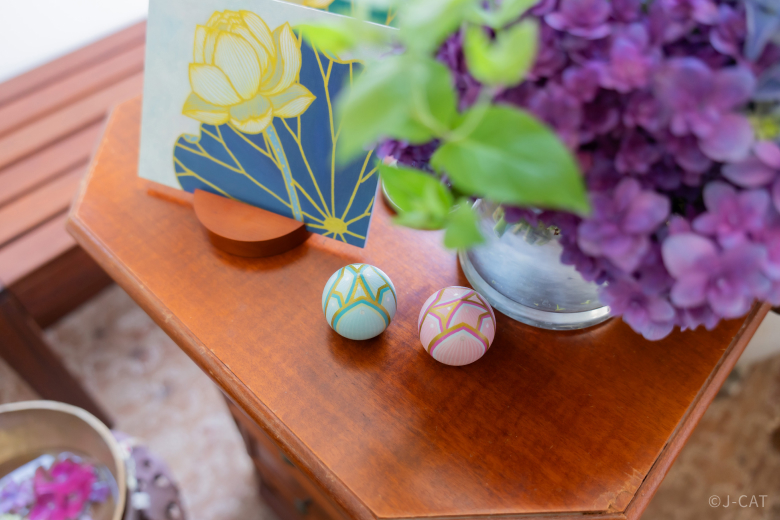
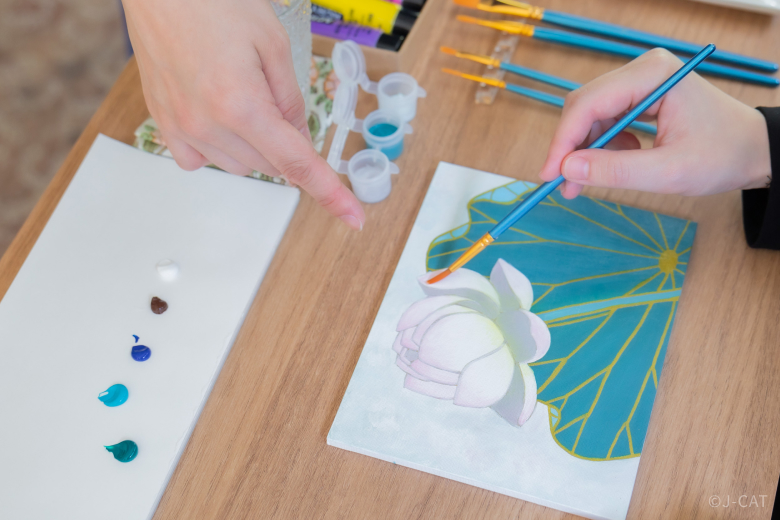
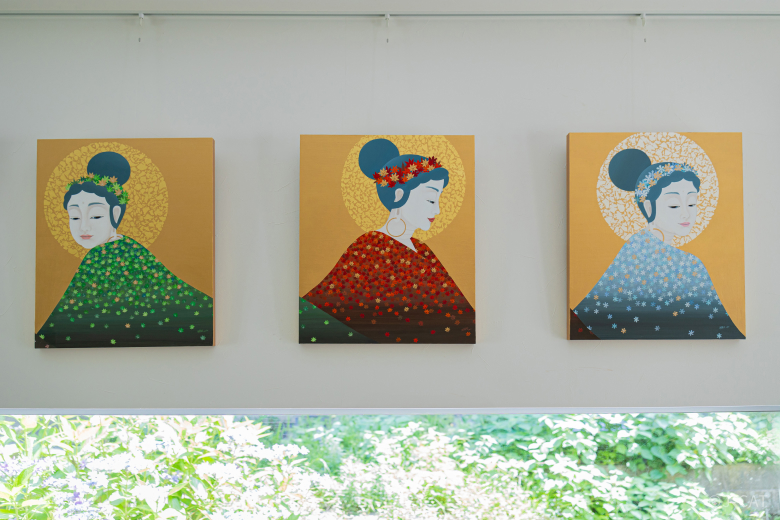
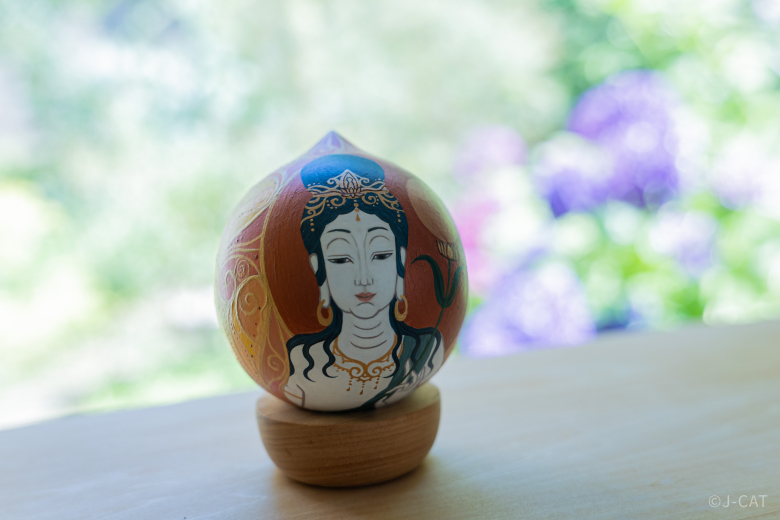
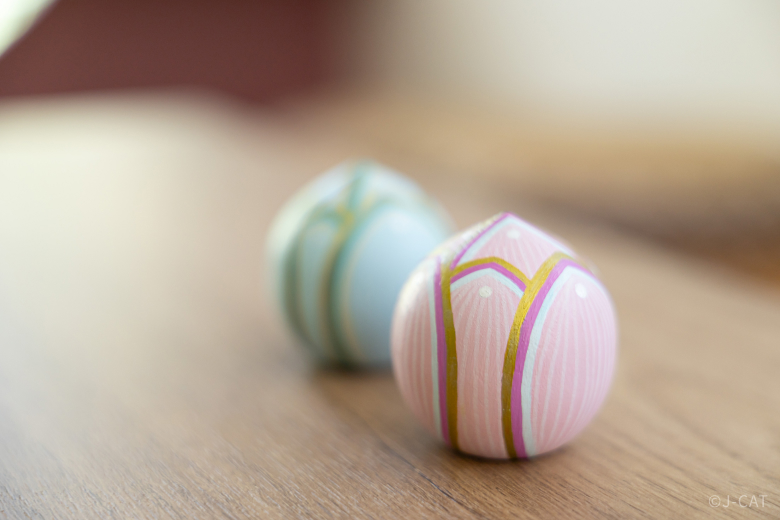
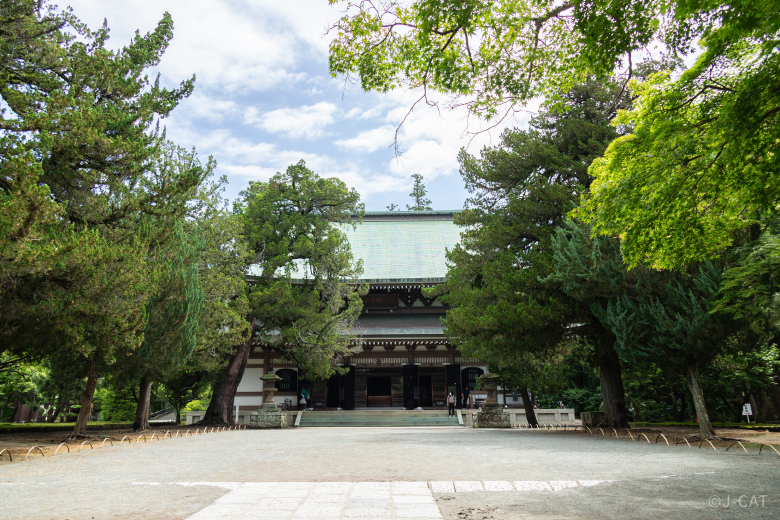
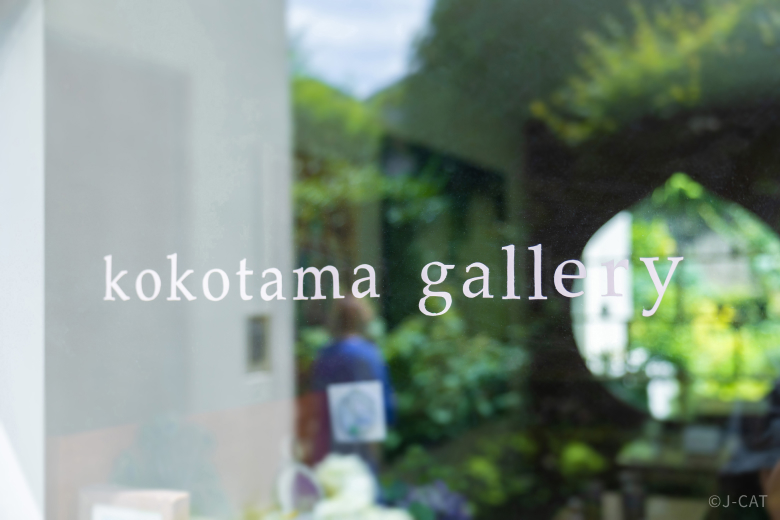






















Overview
This Wabunka-exclusive experience invites you to explore the spirit of prayer alongside Kannon (Goddess of Mercy) painter Youka, in the historic and scenic town of Kita-Kamakura, Kanagawa. With guided visits to the revered Engakuji Temple and the 13th-century Koshoji Temple, you will walk paths long traveled by those in search of reflection. Afterwards, retreat to Youka’s studio, surrounded by greenery, for a hands-on Kannon painting session featuring the "Lotus Flower." In this calm, contemplative space, enjoy the time to reconnect with yourself and find stillness away from daily life.
Key Features
・A guided tour of Kita-Kamakura’s temples and a Kannon painting workshop with renowned artist Youka
・Explore Engakuji, one of Japan’s most important Zen temples, and Koshoji, a historic site believed to have once sheltered hidden Christians during the Edo period
・Enjoy a private studio session where you’ll create a mini Kannon painting of the Lotus Flower or the face of Kannon (additional fee applies for the latter). You can also choose to make a three-dimensional kokotama piece. Your completed work can be taken home the same day
Kamakura
180mins
from ¥16,000 /person
1 - 3 participants
Available in English
Cancel free up to 2 days prior
Details
Visit the Rare Crowned Shaka Nyorai (Buddha)
Just an hour by train from Tokyo, Kita-Kamakura offers a peaceful townscape lined with greenery and timeworn temples. Known as the gateway to the ancient capital of Kamakura, it is here that your journey begins.
The first stop is Zuirokuzan Engaku Kosho Zenji, more commonly known as Engakuji Temple, just a minute’s walk from Kita-Kamakura Station. Founded in 1282 by the eighth regent of the Kamakura Shogunate, Hojōo Tokimune, the temple was built with the guidance of Zen Master Mugaku Sogen, invited from China’s Song Dynasty.
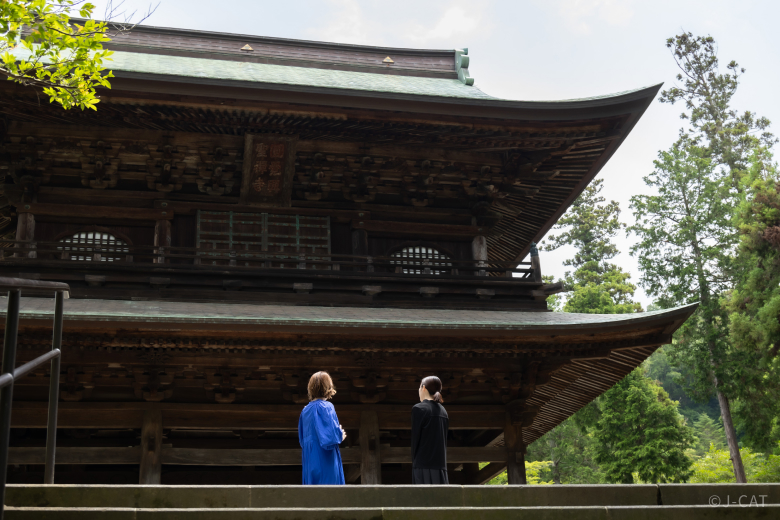
The Sanmon Gate before the Buddha Hall, said to clear away worldly desires
Engakuji is one of the five great Rinzai Zen temples in Kamakura. On this guided tour, you will explore its spacious grounds—home to numerous cultural treasures, including the Shariden Hall and the Great Bell, both designated National Treasures. You will start at the Buddha Hall, where the temple’s principal image is enshrined.
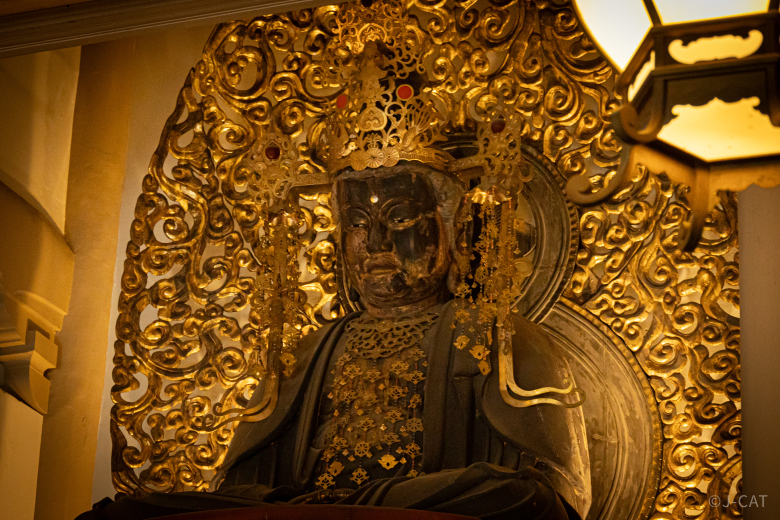
Engakuji’s principal image: a seated Shaka Nyorai adorned with a precious crown
The Buddha Hall, rebuilt in 1964, houses a striking 4.8-meter seated statue of Shaka Nyorai, or Buddha. Unlike typical depictions of Shaka, who is usually shown without adornments, this rare statue wears an ornate crown. Such representations are uncommon and reflect a unique connection between Japanese Buddhist art and the Song Dynasty tradition.
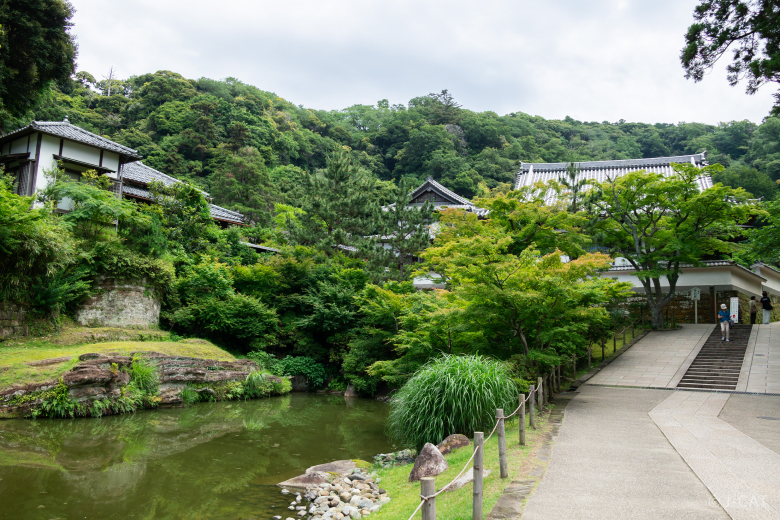
Myo-kochi Pond, present since the founding of Engakuji Temple
Opposite the Hojo Garden lies Myo-kochi Pond, while Shirasagi-ike Pond greets visitors near the entrance. Both are attributed to Muso Soseki, the famed Zen monk and garden designer behind Kyoto’s World Heritage Site Tenryu-ji. These serene landscapes, praised for their refined beauty, are designated National Scenic Spots, a title reserved for places of exceptional aesthetic value.
Feel the Embrace of History and Nature
After visiting Engakuji Temple, you will take a slow walk through the narrow streets of Kita-Kamakura, lined with seasonal blossoms and lush greenery. About halfway along your walk from Engakuji Temple, you will come across Seitaisan Eigetsuin Koshoji Temple, a tranquil sanctuary nestled amid the greenery. Known as the Shakunage Temple for the many rhododendrons that bloom on its grounds, Koshoji is believed to have been founded in the 13th century.

The exterior of Koshoji Temple, wrapped in seasonal flowers
Though centuries have passed, the temple’s spirit of compassion endures. During the Edo period (1603–1868), Koshoji is said to have provided refuge for hidden Christians from nearby villages. As a result, Christian symbolism is woven into its design, a rare combination with the central Amida Triad. One notable feature is the cruciform crest carved into the transom of what is affectionately called the “Kurusu Gate.”
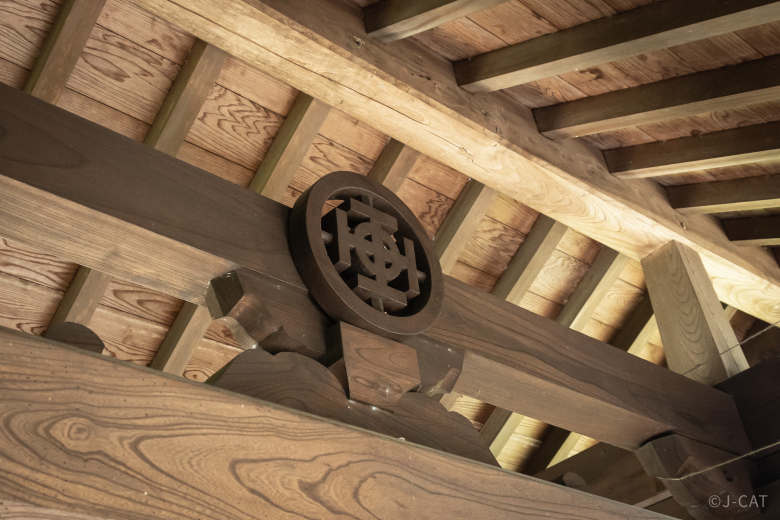
The “cruciform crest” seen on the transom of the temple gate
With these stories in mind, you will continue on while carrying a sense of the past as you arrive at Youka’s studio. It is here that the art experience begins.
A Leading Kannon Painter Celebrated in Japan and Abroad
Youka’s work expresses the spirit of Kannon, bodhisattva of compassion, healing, and harmony, through a distinctly modern lens. Her approach transcends religious boundaries, blending traditional themes with contemporary sensibility. Since holding her first solo exhibition in 2014, she has gone on to donate works to sacred sites such as the Golden Temple in Nepal, the holiest pilgrimage site for Sikhs. Her pieces have also been exhibited at prominent temples across Japan, including Miidera in Shiga, Hasedera in Nara, and Toji in Kyoto.
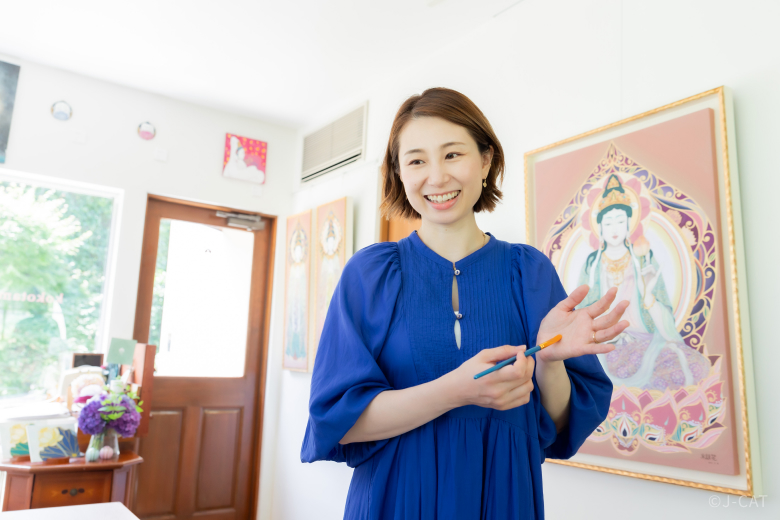
Youka in her own studio, kokotama gallery
Youka studied art at New York University. During her time abroad, she began to look inward, reconnecting with her cultural roots and the traditions of Japan. “I found myself drawn to the Kannon Bodhisattva after returning to Japan, revisiting history books and temple sites,” she recalls. The gentle, open-hearted image of Kannon moved her deeply, not only for its beauty, but for the heartfelt prayers people had offered to it across generations.
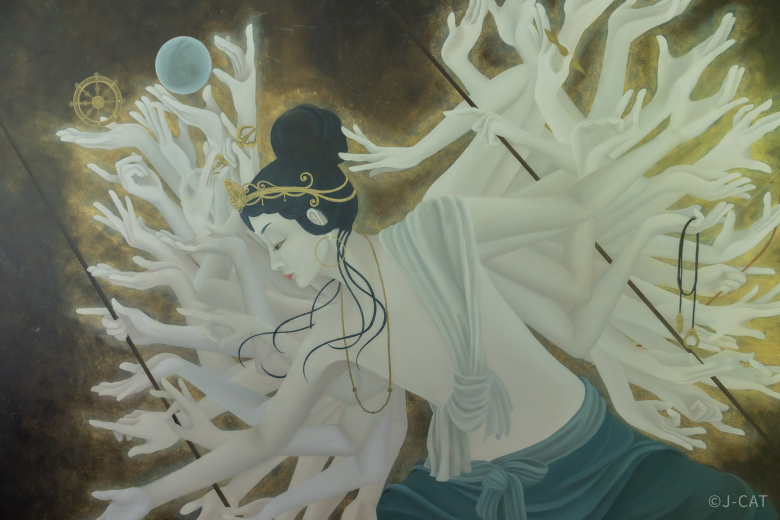
Chihayafuru, Youka (2015), F130 / 1940mm × 1620mm
The Great East Japan Earthquake in 2011 also left a lasting imprint on her work. “I was devastated by the scale of the disaster,” she says, “but I also felt overwhelming gratitude for the prayers offered by people around the world.” In that moment, she saw prayer as something that transcends belief—a universal act of connection and care. Seeking permission directly from temples, she began developing a style of Kannon painting embraced beyond religious lines.
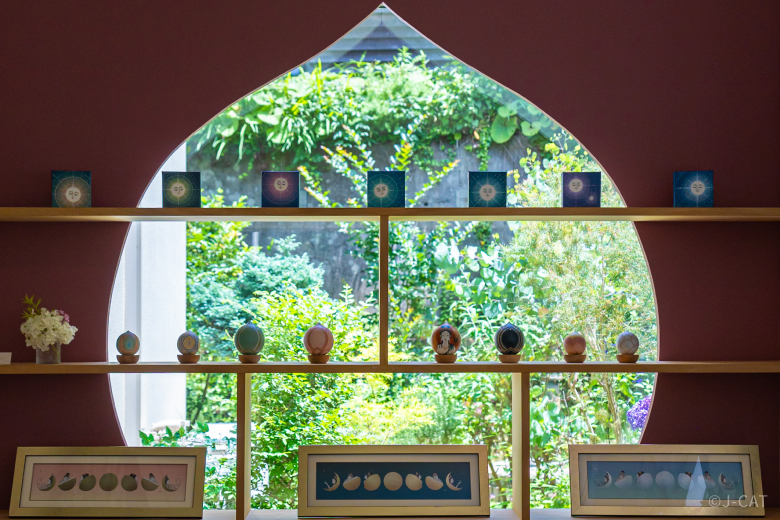
The studio’s teardrop-shaped window evokes a Buddhist jewel motif
Youka eventually chose Kita-Kamakura as her base, drawn to its quiet hills, rich natural beauty, and a sense of community rooted in the land. The flowers outside her window, the shifting sky, birdsong, and even the hum of insects all offer inspiration. The surrounding environment, she says, is part of the creative process itself.
Create Your Own Mini Kannon Artwork, A Meditative Coloring Experience
Inside kokotama gallery, Youka’s studio is filled with vibrant depictions of Kannon, each rendered in rich acrylic hues. “In the past, people sought to make Kannon statues shimmer,” she says. “With modern materials, I wanted to explore new color possibilities and bring out a fresh meaning in each piece.”
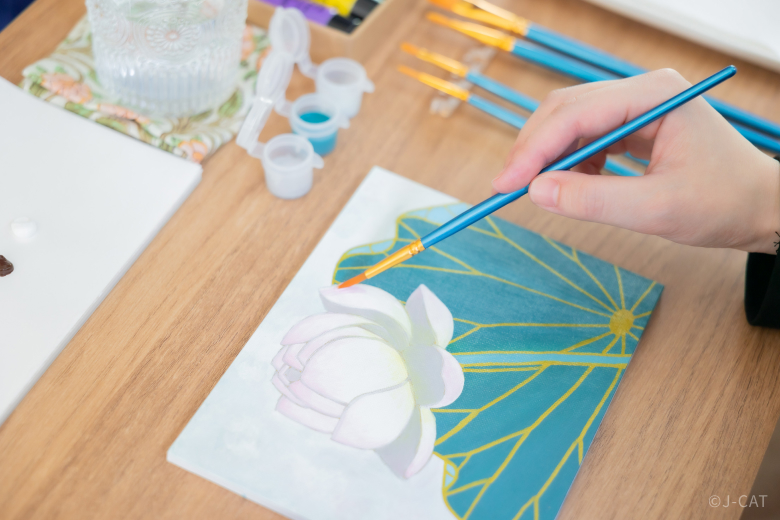
Applying acrylic paint along outlines drawn by Youka
Your art experience begins in this peaceful, light-filled studio imbued with quiet prayer. After a brief talk by Youka on the spiritual motifs in Kannon iconography, she will guide you through the process, from understanding acrylic painting tools to applying color with care. The theme of the day is the Lotus Flower, long revered in Buddhism as a symbol of purity, enlightenment, and rebirth, and a blossom said to grow only in the Pure Land.
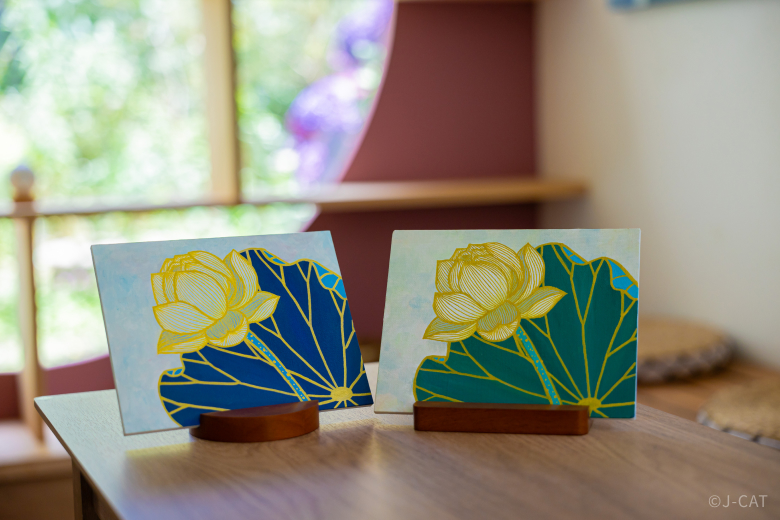
Example of a mini Kannon artwork: Lotus Flower (for illustration only)
The painting board comes pre-sketched, and paints can be prepared upon request, making it approachable even for beginners. Under Youka’s attentive instruction, you will complete a gentle and expressive lotus flower using soft, harmonious tones. For those seeking a different form, the motif can be changed to a Kannon figure, or even upgraded to a three-dimensional kokotama sculpture (additional fee applies). Each guest is encouraged to follow their own natural sense of beauty as they create.
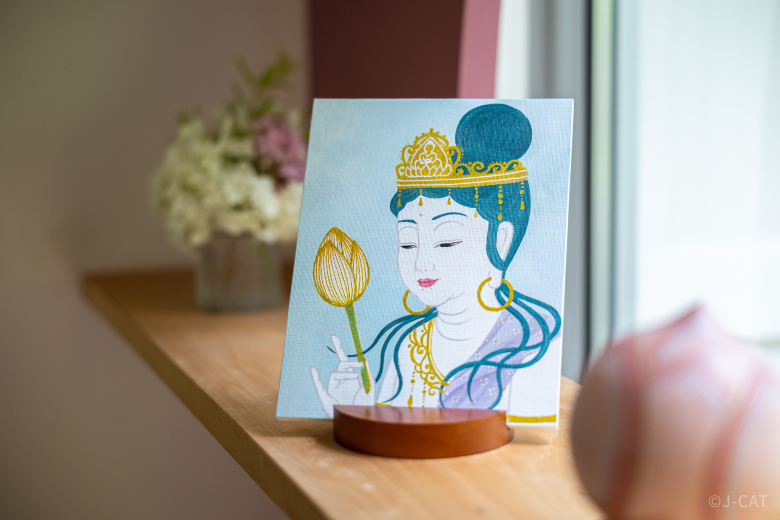
Optional: Kannon painting motif also available
Discover Buddhist Wisdom and Reconnect with Your Inner Self
Youka shares that her wish is to create art that “brings the compassion of Kannon into daily life, calming the heart through its warmth.” This is a rare opportunity to walk the grounds of historic temples in Kita-Kamakura, reflect on the spirit of prayer alongside a leading Kannon painter, and create your own symbolic artwork in a serene studio. In this place where Zen lives on, allow yourself a moment to pause, breathe, and simply be.
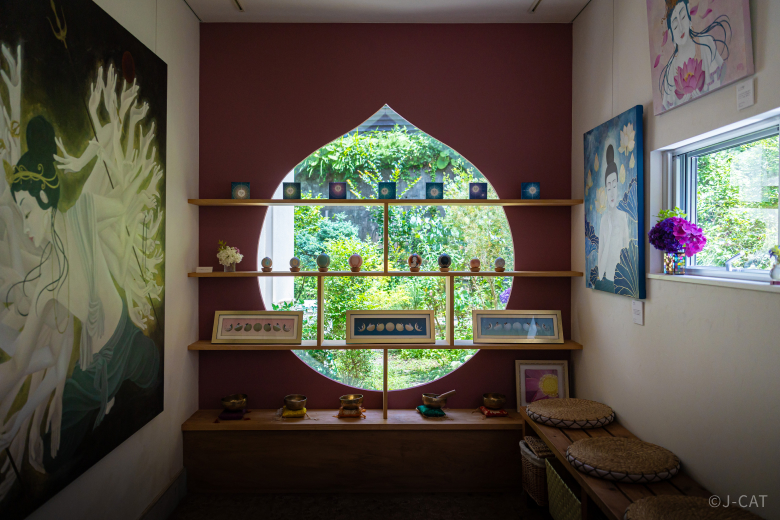
Create art that speaks to the heart in a tranquil gallery setting
Youka / Engakuji Temple
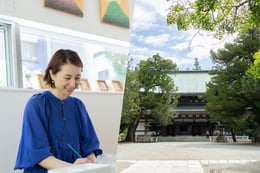
Youka / Engakuji Temple
Youka
Youka is a Kannon painter known for reimagining spiritual art through a contemporary lens. After graduating with honors from New York University in 2011, she held her first solo exhibition in Aoyama, Tokyo, in 2014. Her works have since been shown in both Japan and New York, and she continues to collaborate across disciplines and exhibit in temples throughout Japan. Her studio, kokotama gallery in Kita-Kamakura, is open by appointment only.
Engakuji Temple
Founded in 1282 by Hojo Tokimune, the 8th regent of the Kamakura Shogunate, Engakuji was built to honor those lost in the Mongol invasions. Zen Master Mugaku Sogen from China’s Song Dynasty was invited to oversee its construction. As the second of Kamakura’s five great Rinzai Zen temples, Engakuji is home to a remarkable array of cultural assets: the Shariden and Great Bell, the only National Treasures in Kamakura; the Sanmon Gate, an Important Cultural Property; and many historic artifacts including Buddhist statuary, scrolls, and scriptures.
Location
kokotama gallery
Kamakura City, Kanagawa
Request for booking
Select first preferred date (JST)
January 2026
Sun
Mon
Tue
Wed
Thu
Fri
Sat

Instant Booking

Request Booking

17
Full

17
Unavailable
Kamakura
180mins
from ¥16,000 /person
1 - 3 participants
Available in English
Cancel free up to 2 days prior
Things to know
Contact Us
If you have any questions, please contact us using the form below.
We also accept bookings from corporate clients and travel agencies.